How-To
How Does a Mini-PC Stack Up Against a 1U Rack Server?
I have been working with a SimplyNUC Moonstone system quite a lot lately. First when testing the performance of VMware Workstation and then again when using UL's new benchmarking suite, Procyon. I have been impressed by how much power SimplyNUC has packed into this Lilliputian, 4-inch x 4-inch x 2-inch mini-PC.
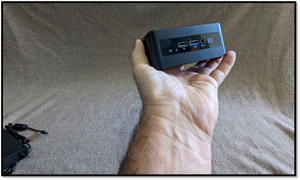 [Click on image for larger view.]
[Click on image for larger view.]
Discussing this system with a friend, we came up with an exciting proposition: Could the Moonstone NUC replace one of the Dell R630 servers in my lab rack? At first, this seemed like a stupid idea, as the Moonstone is a high-powered, small-form-factor desktop system, while the R630 was designed to handle enterprise workloads.
After much discussion and back-and-forth weighing the benefits of both systems, we decided that the only way to tell is to set both systems up, benchmark them, and then weigh their advantages and disadvantages.
The Dell R630 Server
The Dell server is a PowerEdge Gen13 R630 with 2X E5-2695 v4 processor, and 256GB RAM. The R630 was first released in 2014 and was still available as late as November 2021.
I bought my R630 about a year ago on Amazon as a renewed server for around $1,000. Dell originally listed it for around $3,000.
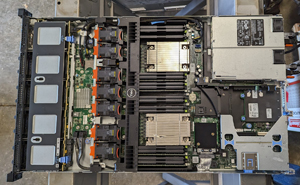 [Click on image for larger view.]
[Click on image for larger view.]
The Moonstone Mini-PC
SimplyNUC released its Moonstone series of mini-PCs in 2023. They have AMD Ryzen 7000 series processors, RDNA-based Radeon Graphics, support for 64GB of DDR5-4800 high-speed RAM, and up to 16TB of storage. Moonstone systems start at around $750.
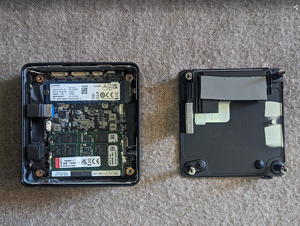 [Click on image for larger view.]
[Click on image for larger view.]
Comparing the Systems
I pulled some key metrics from both systems into the table below. The full specs for the Dell R630 are here, and the specs for the Moonstone are here.
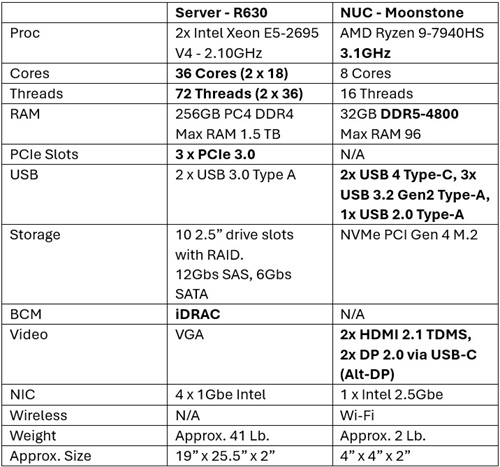 [Click on image for larger view.]
[Click on image for larger view.]
-
Processor: The R630 has dual Intel Xeon E5-2695 V4 processors, which run at 2.10GHz and have 36 cores. The Moonstone has an AMD Ryzen 9-7940HS processor, which runs at 3.1GHz and has eight cores.
At first glance, the R630 seems like it would greatly outperform the Moonstone. However, my testing showed that Moonstone's single AMD processor, with its newer architecture and faster speeds, made it very competitive with the older Intel dual processors.
I will discuss processor performance in a separate section in this article.
-
Memory: The R630 supports 1.5 TB of DDR4 RAM. The Moonstone supports 96GB of DDR5 RAM.
Although the R630 supports more RAM than the Moonstone, the Moonstone supports DDR5 RAM, which theoretically gives a 50 percent increase in data transfer rate compared to DDR4.
If you have applications, virtual machines, or containerized workloads that need a lot of memory and need to stay resident, the R630 would be a good choice. The Moonstone would be a better choice if you need faster transaction times.
-
Expandability: The R630 has three PCIe 3.0 slots for expandability, while the Moonstone has two USB 4 Type-C and three USB 3.2 Gen2 Type-A ports.
The three PCIe 3.0 slots allow you to expand the system to add faster NICs or a GPU; however, its older PCIe 3.0 interface will bottleneck its performance. Moonstone's USB enables the connection of external NICs, JBOD, and other peripheries to it.
-
Networking: The R630 has 4 x 1Gb network ports and no Wi-Fi, while the Moonstone has a 2.5Gb NIC and a 2.4Gb Wi-Fi.
As the systems sit, the R630 has a total network capacity of 4Gb, which could be configured for redundancy. The Moonstone has a network capacity of 4.9Gb with limited options for redundancy.
Storage: The R630 has 10 2.5” drive slots that support 12Gbs SAS or 6Gbs SATA, while the Moonstone supports NVMe PCI Gen 4 M.2.
NVMe can theoretically deliver up to six times better throughput and IOPS performance than an equivalent SATA drive.
If you are using the system as a NAS or for other use cases that require a lot of storage, the R630 can deliver. The Moonstone system is a better choice if you need faster transaction times.
Out of Bound Management: The R630 came with an iDRAC for OBM. The Moonstone does not support OBM.
Video:The R630 supports a single VGA monitor, while the Moonstone supports four 4K monitors.
Size: You can easily fit 15 Moonstones in the same space as an R630.
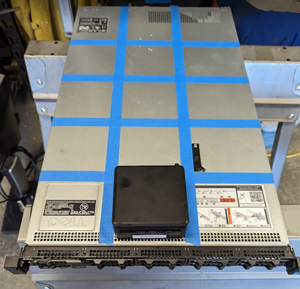 [Click on image for larger view.]
[Click on image for larger view.]
-
CPU Performance Benchmarking: I compared CPU benchmarking scores to understand how the processors compared. I looked at the performance of Intel systems that used single and dual processors.
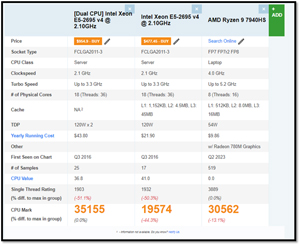 [Click on image for larger view.]
[Click on image for larger view.]
When comparing the single CPUs of the two systems, the AMD processor outperformed the older Intel processor by about 50 percent. However, when comparing the single AMD processor to the dual Intel processors, the two Intel processors were about 17 percent faster than the single AMD processor.
It should be noted that the running cost of the AMD processor was about one-fourth the price of the dual Intel processors.
Procyon AI Score
As AI becomes increasingly popular, getting a feel for how systems can handle it is essential. I used UP Procyon to benchmark these systems' AI capabilities.
The UL Procyon AI Tests measure the performance of AI applications running on the systems using various models and testing protocols. These tests help developers, policymakers, and end-users make informed decisions about hardware for deploying AI technologies.
The benchmarking software utilizes software development kits (SDKs) to measure AI inference performance, including Microsoft Windows ML, Qualcomm SNPE, Intel OpenVINO, and NVIDIA TensorRT. The benchmark includes both float- and integer-optimized versions of each model.
The benchmark employs various AI models, including MobileNet V3, Inception V4, YOLO V3, DeepLab V3, Real-ESRGAN, and ResNet 50. These different models, each with a distinct purpose, give a broad overview of the hardware's capabilities for other tasks.
I ran the tests using Microsoft Windows ML using the CPUs on the systems.
-
Procyon AI Tests on the Dell R630: The overall score of the Dell R630 was 89.
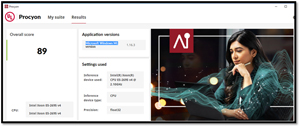 [Click on image for larger view.]
[Click on image for larger view.]
The CPU graph shows that the CPUs were only heavily utilized during the second, third, and sixth tests.
 [Click on image for larger view.]
[Click on image for larger view.]
-
Procyon AI Tests on the SimplyNUC Moonstone: The Moonstone's faster and more modern single CPU architecture beat the R630 dual processors in my AI testing.
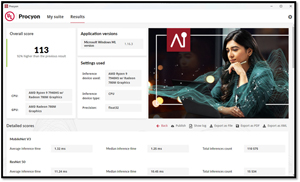 [Click on image for larger view.]
[Click on image for larger view.]
-
Cinebench: I used Cinebench to benchmark the device. Cinebench is a free and widely used tool to test a system's CPU and GPU performance. It can test the CPU and GPU of a system; I only tested the CPUs. Each test took about 10 minutes to run.
When I ran Cinebench on the R630, it scored 25162 when using all cores and had a score of 617 when using a single core.
When I ran Cinebench on the Moonstone, it scored 15195 when using all cores and had a score of 1820 when using a single core.
PCMark 10
I tried to run PCMark 10 on the R630, but it could not run as it needs a GPU that supports OpenGL 4.3, which the system did not have.
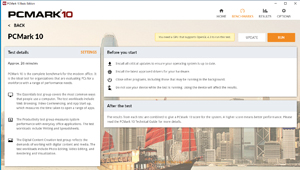 [Click on image for larger view.]
[Click on image for larger view.]
Conclusion
When I started this comparison, I knew I would be comparing apples to oranges. The Moonstone had design limitations based on its small size, while the Dell R630 is an older-generation server system.
However, I was surprised at how well the Moonstone, which was a fifteenth the size of the R630, performed compared to the Dell server.
You would not put the Dell server on your desktop or even in the same room as you. Likewise, the Moonstone wouldn't be a good choice if you need a lot of persistent storage or RAM. However, the Moonstone would be better if you need faster transaction times, AI capabilities, and multimonitor video support.
If you run single-threaded applications, as most do, the newer, faster AMD processor dominates the older, slower Intel processor in the Dell server. But if you are running VMs or containerized workloads, the sheer number of CPU cores and RAM in the Dell server would be a better choice.
Another thing to consider is that older servers often get repurposed for corporations' development or support staff. A smaller system like the Moonstone could perform many of the same functions, taking up a fraction of the space and consuming a fraction of the power. Furthermore, these smaller systems could sit on desktops, freeing valuable data center space.
Overall, this was an interesting thought experiment and showed how fast computer technology develops.